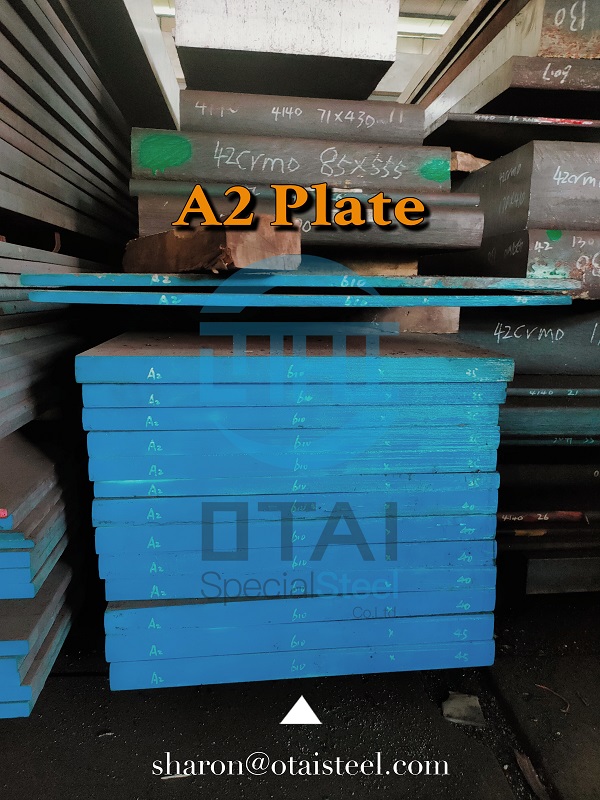A2 tool steel, with its exceptional properties and versatility, holds a pivotal role in various industrial applications. In this article, we delve into the machining techniques and multifarious applications of A2 tool steel, highlighting its significance in modern manufacturing processes.
Understanding A2 Tool Steel
A2 tool steel is categorized as an air-hardening, cold-work tool steel, renowned for its remarkable combination of toughness and wear resistance. Falling under the ASTM A681 specification, A2 tool steel contains carbon, chromium, and molybdenum, all contributing to its outstanding performance characteristics.
Machining A2 Tool Steel
- Cutting Techniques: The machining of A2 tool steel demands specialized tools and techniques. High-speed steel (HSS) or carbide tools are highly recommended for cutting operations. Given its hardness, tools explicitly designed for hard materials must be used.
- Drilling: Drilling A2 Steel Plate necessitates the use of carbide or cobalt drill bits. Employing cutting speeds on the lower side and implementing lubricants or coolants are essential to minimize heat build-up and extend the tool’s lifespan.
- Turning and Milling: Turning and milling A2 steel require a rigid setup and the use of carbide inserts. Maintaining consistent feeds and speeds is crucial to prevent tool wear and overheating.
- Grinding: A2 tool steel can be ground to precise dimensions, making it suitable for applications with tight tolerances. Employ silicon carbide or aluminum oxide grinding wheels, and ensure workpiece cooling to avoid overheating.
Applications of A2 Tool Steel
- Cold Work Tooling: A2 tool steel finds frequent use in the manufacturing of cold work tooling, including dies and punches. Its outstanding toughness and wear resistance make it the ideal choice for shaping and forming materials at lower temperatures.
- Cutting Tools: A2 steel is a favored material for crafting cutting tools like shear blades, slitters, and knives. Its ability to retain a sharp edge and resist wear positions it as an invaluable asset in these applications.
- Blanking and Stamping: A2 tool steel’s unique blend of hardness and toughness renders it well-suited for blanking and stamping operations, facilitating the production of intricate parts and components.
- Injection Molding: A2 Steel Plate is the preferred choice for manufacturing molds used in injection molding processes. Its durability and dimensional stability are crucial in ensuring the production of top-quality plastic components.
- Woodworking Tools: Woodworkers frequently employ A2 tool steel in crafting woodworking tools such as chisels, plane blades, and carving knives. Its ability to maintain sharpness and resist chipping makes it a top pick among artisans.
- Thread Rolling Dies: Thread rolling dies, crafted from A2 tool steel, play a pivotal role in the production of screws and bolts. The steel’s hardness and wear resistance are indispensable for maintaining the quality of threaded fasteners.
In conclusion, A2 tool steel’s exceptional properties and versatility have solidified its standing as an invaluable material in the manufacturing industry. To efficiently machine A2 steel, the selection of appropriate tools and techniques is paramount. Whether in cold work tooling, cutting tools, or a myriad of other applications, A2 tool steel continues to be an essential component of modern manufacturing processes.











